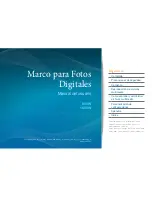
11
Other
Applications
Playing/
Erasing Images
Basic
Photography
Additional
Information
Connecting to
the PC
Getting Ready
Notes On Handling Your Camera
When you use your camera, carefully read and strictly observe the Safety Precautions
from page 5 onwards and the notes described below.
Avoid using or storing the camera in the following places:
• Places subject to humidity, dust and dirt
• Places subject to direct sunlight
• Places subject to high or low temperature
• Places filled with highly flammable gas
• Places near gasoline, benzene or paint thinner
• Places subject to strong vibrations
• Places subject to smoke or steam
• Places subject to strong magnetic fields (such as electric motors, transformers or
magnets)
• Places contacting chemicals such as pesticides or next to rubber or vinyl products
for long periods
Do not expose the camera to sand or dust.
• The PDR-T10 is particularly sensitive to sand and dust. If the camera comes into
contact with sand or dust, not only will the camera become damaged, it will also no
longer be repairable.
Pay special attention when using the camera at the beach or where sand or dust is
likely to be present.
Notes On Condensation
• Due to a sudden change in temperature, such as when you move the camera from
a cold location to a warm one, water droplets (condensation) may form on the
inside of the camera or on the lens. When this occurs, switch the camera OFF, and
wait an hour before using the camera. Condensation may also form on the SD
card. If this happens, remove the SD card, wipe off any condensation and wait a
short time before using it again.
Carrying Out Maintenance on Your Camera
• To prevent the lens, surface of the LCD monitor from being scratched, blow off any
dust from these parts with a blower brush and lightly wipe with a soft dry cloth.
• Clean the body of the camera with a soft dry cloth. Do not use volatile liquids such
as paint thinner, benzene or insecticide, as these may react with the camera body
and cause deformation or remove the coating.













































